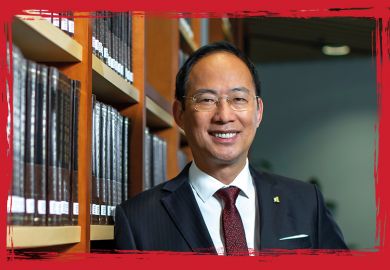In 2018, more than £150 million in scholarships was available to UK students: enough to cover the annual tuition fees of more than 16,500. Yet, according to research published by the Scholarship Hub, almost half of scholarship-awarding organisations had to work hard to attract applicants and often needed to extend deadlines. A third received fewer than 50 applications, and only two said they received good responses.
That reflects the fact that less than a third of first-years applied for any financial help during the 2019/20 academic year, according to Ucas data. And yet students across the country and the world are worried about the cost of higher education amid the post-pandemic cost-of-living crisis.
In fact, 54 per cent of A-level pupils considered not attending university because of the cost, according to a 2023 survey. Among current students, 52 per cent have considered dropping out for financial reasons. And 91 per cent of UK higher education students were worried about the rising cost of living in 2022.
How can there be such a disconnect between, on the one hand, the high need for and plentiful availability of financial aid and, on the other, such low application rates?
There is a twin problem of a lack of awareness and a reluctance to engage. Nearly three-quarters (72 per cent) of those who didn’t apply for any financial assistance in 2019/20 assumed that they weren’t eligible. That is no doubt in part because researching scholarship opportunities takes time and effort, which many students are unwilling or unable to put in. The same is true of the application process itself.
Unfortunately, those most in need of financial aid are also, typically, those least likely to be in a position to put in such time and effort given the work and/or caring commitments that many have. The result is that many grants and scholarships are never given to anyone – the worst outcome on all accounts.
Meanwhile, a small number of students receive a disproportionate level of aid. One US student secured more than $2 million (£1.6 million) by applying for over 100 scholarships and winning 35, allowing her to graduate with more than $100,000 in savings. More recently, another US student made headlines for winning scholarship offers worth a record $9 million, from 125 colleges and universities, with more potentially in the pipeline.
This is not a criticism of these students – they have both used their impressive achievements to bring attention to scholarships. However, their experience highlights the problem with the existing approach awarding them, which appears to favour a narrow subset of people who understand how to navigate the system. Even the student who received $2 million in scholarship funding was initially rejected more than 30 times before “learning the language”.
It is perhaps unsurprising that both students had impressive academic records and did lots of extracurricular activities. Meanwhile, many who have need but don’t fit that profile are left without options. We need to ask ourselves whether the purpose of financial aid is to help the best and brightest achieve a little more or to help the people who need it the most, for whom education otherwise isn’t an option.
I suggest it is the latter. Just as social mobility initiatives have evolved to focus on widening opportunities for everyone, rather than helping an elite few, scholarships should support more good students.
To this end, organisations need to change their approach in assessing applications. While fears of making awards to “undeserving” candidates are understandable, I know from personal experience how overly complex the application process can be. Rather than using prescriptive criteria and finding reasons to say no – reflecting lingering Victorian notions of a “deserving” and “undeserving” poor – organisations need to make students feel that they will be listened to fairly if they invest their time and effort in the application processes.
The primary question should be whether the applicant needs the help. If the answer is yes, the rest is largely immaterial. This is the approach we have taken at the Law Training Centre. By allowing people to express their need on their own terms, we’ve opened the door to learners from all walks of life and all corners of the UK and the world. For the vast majority, the scholarship was the difference between being able to continue their education and having to give up their ambitions, and by helping them we hope to contribute to a more diverse professional environment, with all the benefits that brings to the workforce and society.
Secondly, while efforts by organisations such as The Scholarship Hub have helped improve awareness of the help available to students, it would be great to have a centralised portal that would allow students to see all the help they’re eligible for and make one common application.
Such a hub would also allow scholarship providers to coordinate to ensure a small number of top applicants are not awarded excessive amounts. Although providers will each have their own awarding criteria, it makes sense to strive for a more equitable distribution of funds.
Far greater changes are needed across the higher education system to ensure it is truly accessible to all. But, particularly in a cost-of-living crisis, giving many more students the chance to fulfil their ambitions without needing to worry about the cost would be a good place to start.
Eve Dullabh is director of education at the Law Training Centre.
Register to continue
Why register?
- Registration is free and only takes a moment
- Once registered, you can read 3 articles a month
- Sign up for our newsletter
Subscribe
Or subscribe for unlimited access to:
- Unlimited access to news, views, insights & reviews
- Digital editions
- Digital access to THE’s university and college rankings analysis
Already registered or a current subscriber? Login








